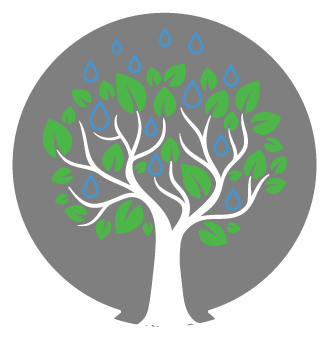- About This Project
- Tree Canopy BMPs
- Model Regulation
-
Hobby Farm BMPs
- Section 1. Introduction To Hobby Farming & Water Quality
- Section 2. Getting Started: Understanding Your Hobby Farm Site
- Section 3. Creating a Stormwater Management Plan For Your Hobby Farm
- Section 4. Nutrient Management For Water Quality
- Section 5. Animal Management For Water Quality
- Section 6. Stormwater Runoff Site Management
- Section 7. Hobby Farm Management & Safety
- Hobby Farm Guidance Survey
- Project Resources
- Contact Us
APA- MA. 2011. Sustainable Neighborhood Road Design: A Guidebook for Massachusetts Cities and Towns. American Planning Association - Massachusetts Chapter and Homebuilders Association of Massachusetts. Accessed at http://www.apa-ma.org/
Appleton, B., J. Horsley, V. Harris, G. Eaton, L. Fox, J. Orband, C. Hoysa. 2009. Trees for Parking Lots and Paved Areas. College of Agrriculture and Life Sciences, Virginia Polytechnic Institute and State University.
Bartens, Julia et.al. 2008. Can Urban Tree Roots Improve Infi ltration through Compacted Subsoils for Stormwater Management? J. Environ. Qual. 37:2048–2057 (2008).
Cahill Associates Inc. 2005. Pennsylvania (Draft) Stormwater Best Management Practices Manual: 2nd Draft – January 2005. Retrieved from the Pennsylvania Department of Environmental Protection website: http://www.elibrary.dep.state.pa.us/dsweb/Get/Version-48477/07_Chapter_6.pdf
Center for Watershed Protection. 2009. 2000 Maryland Stormwater Design Manual Volumes I & II. Retrieved from Maryland Department of the Environment website: http://www.mde.state.md.us/programs/Water/StormwaterManagementProgram/MarylandStormwaterDesignManual/Pages/programs/waterprograms/sedimentandstormwater/stormwater_design/index.aspx
Coder, R. 1996. Identified Benefits of Community Trees and Forests. University of Georgia Cooperative Extension Service Forest Resources Unit Publication FOR96-39; October 1996.
CUFR. 2002. Fact Sheet #4: Control Stormwater Runoff with Trees. Center for Urban Forest Research, Pacific Southwest Research Station, USDA Forest Service, Davis, California, July 2002.
Day, S. D. and S.B. Dickinson, Eds. 2008. Managing Stormwater for Urban Sustainability Using Trees and Structural Soils. Virginia Polytechnic Institute and State University, Blacksburg, VA.
Klingaman, Nicholas P. et al. 2007. A comparison of Three Canopy Interception Models for a Leafless Mixed Deciduous Forest Stand in the Eastern United States. American Meteorological Society. DOI: 10.1175/JHM564.1
Leonard, Raymond E. 1961. Interception of Precipitation by Northern Hardwoods. Northeastern Forest Experiment Station, Forest Service. U.S. Department of Agriculture, Upper Darby, PA Ralph W. Marquis, Director.
Link, Timothy E., et al. 2004. The dynamics of rainfall interception by a seasonal temperate rainforest. Agricultural and Forest Meteorology 124: 171-191.
MDE. 2010. Environmental Site Design (ESD) Process & Computations. Maryland Department of the Environment. Baltimore, MD.
NACTO. 2012. NACTO Urban Street Design Guide. National Association of City Transportation Officials, New York, NY 10041. www.nacto.org
Peper, P.J., et. al. 2007. New York City, New York Municipal Forest Resource Analysis. Center for Urban Forest Research, USDA Forest Service, Pacific Southwest Research Station, Albany, CA.
Sanders, Ralph. 1986. Urban Vegetation Impacts on the Hydrology of Dayton, Ohio. Urban Ecology 9: 361-376.
Storey, B.J., M. Li, J. A. McFalls and Y. Yi. 2009. Stormwater Treatment with Vegetated Buffers (NCHRP Project 25-25 Task 53). Retrieved from Transportation Research Board website at: http://onlinepubs.trb.org/onlinepubs/nchrp/docs/NCHRP25-25%2853%29_FR.pdf
U.S. Environmental Protection Agency (US EPA). 2013. Stormwater to Trees: Engineering Urban Forests for Stormwater Management. US EPA Office of Wetlands, Oceans and Watersheds, Nonpoint Source Control Branch (4503T), Washington, DC. EPA 841-B-13-001.
Xiao, Qingfu et al. 1998. Rainfall Interception by Sacramento’s Urban Forest. Journal of Arboriculture 24: 235-244.
Xiao, Qingfu et al. 2000. Winter rainfall interception by two mature open-grown trees in Davis, California. Hydrological Processes 14: 763-784.
Xiao, Qingfu and E. Gregory McPherson. 2002. Rainfall interception by Santa Monica’s municipal urban forest. Urban Ecosystems 6: 291-302.
Zon, Raphael. 1927. Forests and water in the light of scientific investigation. Forest Service Department of Agriculture. United States Government Printing Office Washington, D.C.



